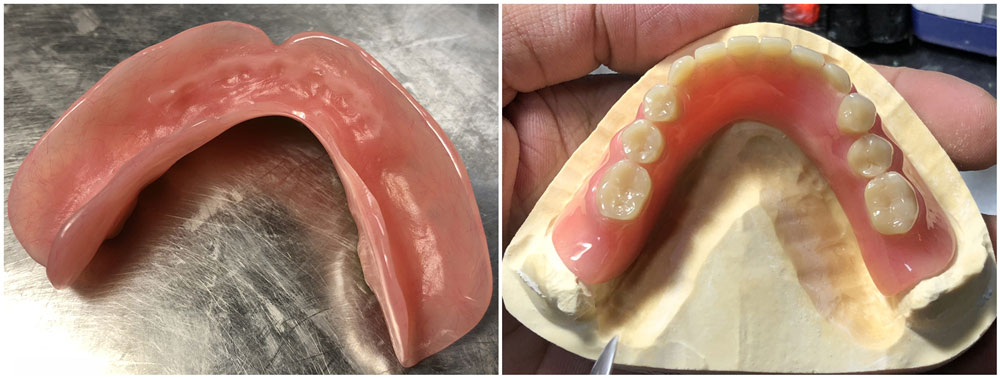Once we receive the dental cases, our experienced technicians will examine whether the dental impressions or stone models are in good conditions. If there is any question with those necessary parts, technicians shall go the QC department for further examination. Customer service will also contact clients for instructions.
In fact, we will have technicians check the work at each stage of the process before it can go to next department. When the finished dental work goes to our QC department, it will be thoroughly examined. Here, we use a PFM case as an example. Similar QC rules apply to other fixed restorations, including all-ceramic cases, dental implants, veneers and so on.
1. Check instructions on Lab Form
The real work should exactly match everything on the lab sheet. For example, if it is meant to be PFM metal copings, then the case should not be finished. Also, all the accessories should be present, and the stone models ought to be clean and neat.
2. Check margins
In order to make sure that the fitting is good, our QC needs to check the margins. We cannot believe our naked eyes, so the help of magnifying device is necessary. Based on the red line, technicians check whether the margin is too long or too short – the margin should precisely end at the red line.
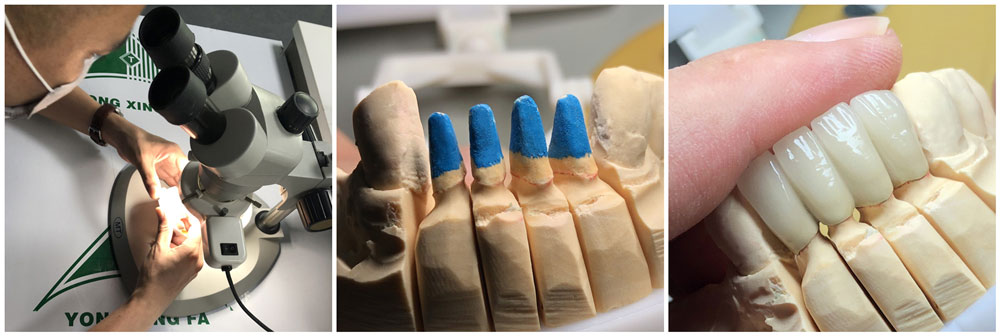
3. Check contacts
Our QC mounts the dental work onto the working model first, to check if the contact is right. Please check the spot where the pencil point is. It is where we need to check the contact. Under the right lighting environment, we can see there is no gap between the natural teeth and the restoration, proving that the contact is great. Second, the QC mounts the dental work onto the study model, to check the contact – this is important, because the study model displays patient’s real oral condition. If the contact here is correct, then everything should be fine.
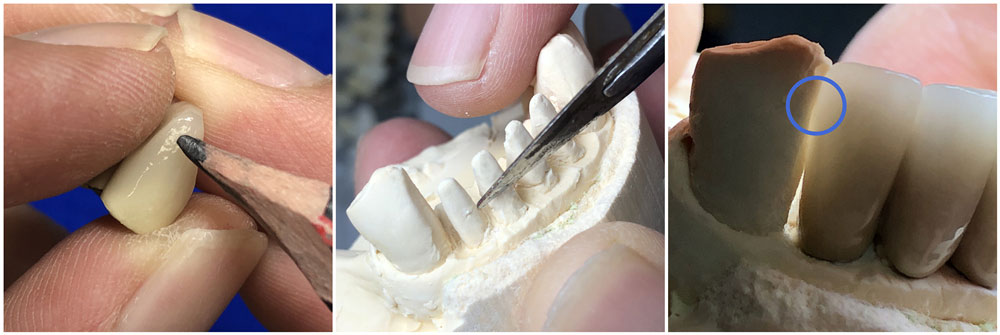
4. Check occlusion
Technicians articulate upper and lower models, to check if the occlusion is right. Normally, there is a tiny space between the upper and the lower models unless dentists require an “In Occlusion”. After that, technicians examine lateral excursion (the left side) – simulate the daily chewing movements to check occlusion. Later, the right side will also be checked.
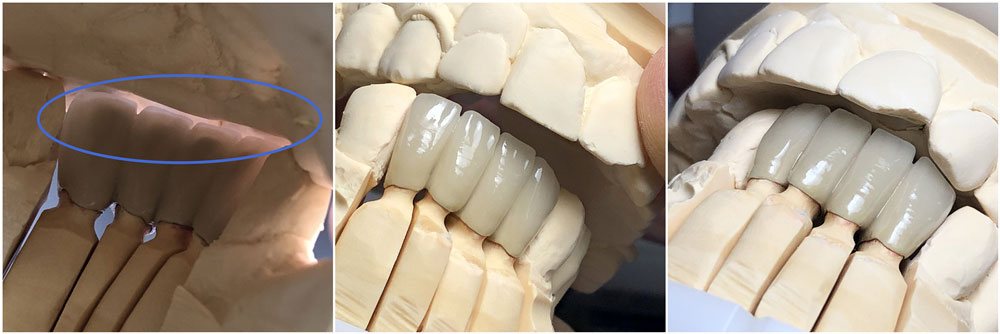
5. Check shade
Technicians check shade with the shade guide, at different angles and under good lighting environment. Later, technicians check the shade in a different lighting condition, usually under dimmer light. This is necessary, since the shade can be different in various lighting conditions and at different angles.
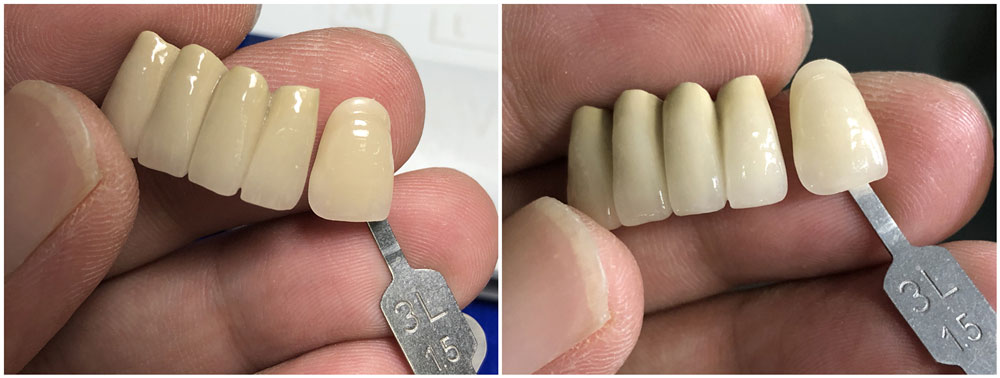
6. Check Anatomy
Whether the anatomy is good or not largely depends on the technicians’ aesthetic capabilities. A good crown should be full of details, and should fully consider the shape of the adjacent teeth. Technicians also need to check if the arch is proper and beautiful.
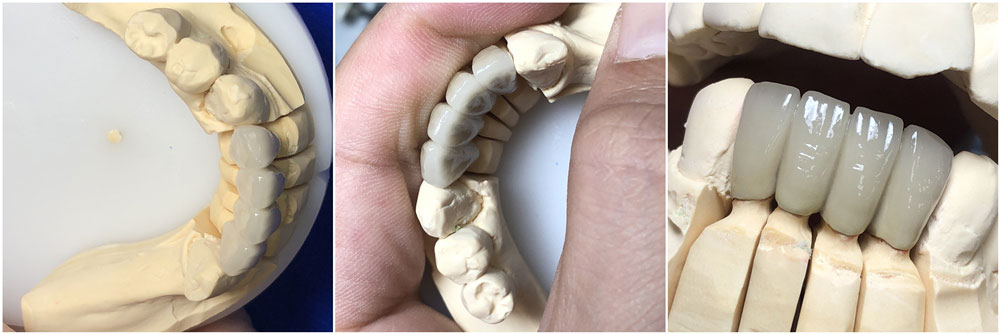
7. Check surface
The surface of the whole crown or bridge should be smooth – no burs, no sharp edges. Our QC will make sure that there is nothing clinging to the surface – no bubble and no dust. So the dental work can be clean and neat.
Quality Control for Removable Case
Now we introduce what QC does for removable cases. Actually, we also have technicians to check the work in each department. For example, when the stone models are poured and trimmed, the leader of the department will make sure that the work can meet our standards, before it can go to next process. Here, we use an acrylic denture as an example. Similar QC rules apply to other removable restorations, including frameworks, dental partials, night guards and so on.
1. Check instructions
QC should examine if there are special requirements on the lab form, and if the work is processed precisely according to the requirements. For example, if dentists ask for an acrylic denture Try-in, then the work should not be finished. Also, all the accessories, including dental impressions, bites and stone models, should be present.
2. Check occlusion
QC checks if the occlusion with labial and buccal sides is correct. All the teeth ought to be set up according to the Transverse Curve.
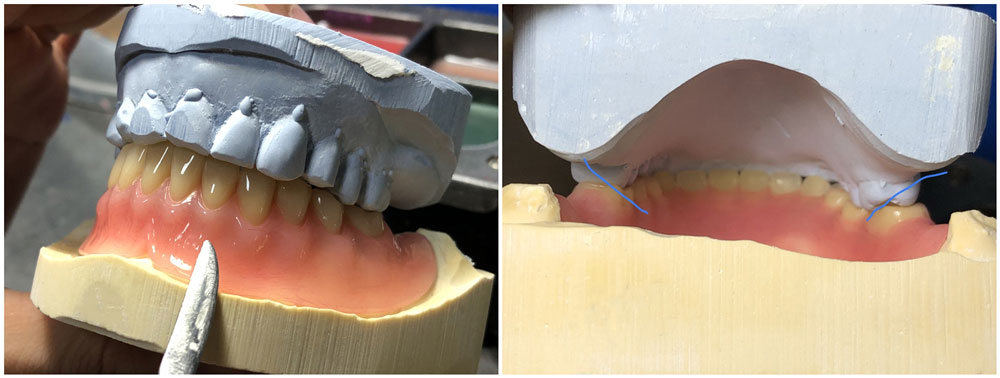
The middle line is examined, too. All teeth should be set up onto the ridge of the whole arch, so they could withstand the chewing force. Only in this way can the teeth function well.
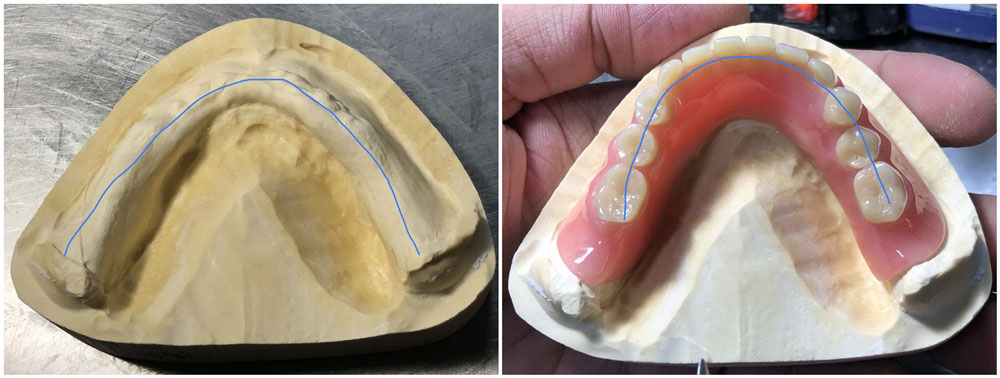
3. Check the gum line
If there are remaining natural teeth, the gum line of the denture is determined based on that of the natural teeth. The size and length are also determined in this way. Suppose there is no natural tooth, then QC will check the gum line of the opposing teeth, and then make a decision accordingly. However, if there is no tooth on the Upper and Lower jaws, technicians will have to draw lines to decide where to put #3 and #6, and then decide the size of the teeth to be used. QC will examine the lines to ensure the right size of the teeth used.
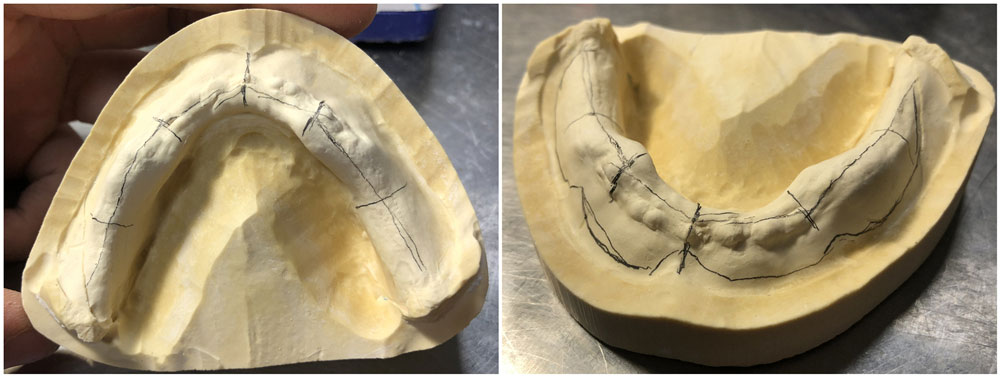
4. Check the margin of the denture
QC checks if the margin of the denture has the proper length, and if the palatal straps are properly avoided.
5. Check fitting
QC checks if the removable restoration can perfectly sit on the stone model. The dental work should also be easy to seat and remove.
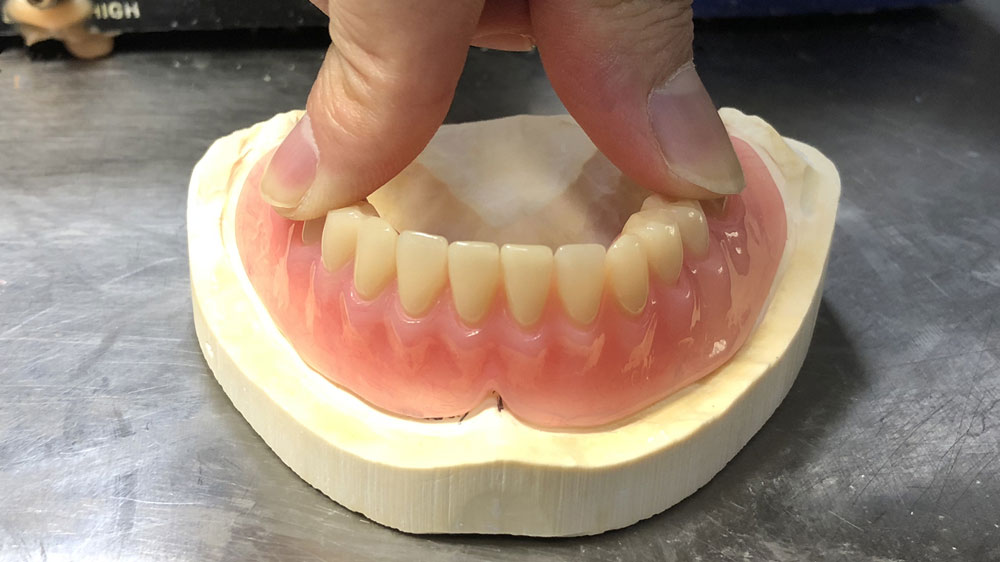
6. Check surface
QC examines the base and the margin, both of which should be smooth. QC will check those areas with hands.
